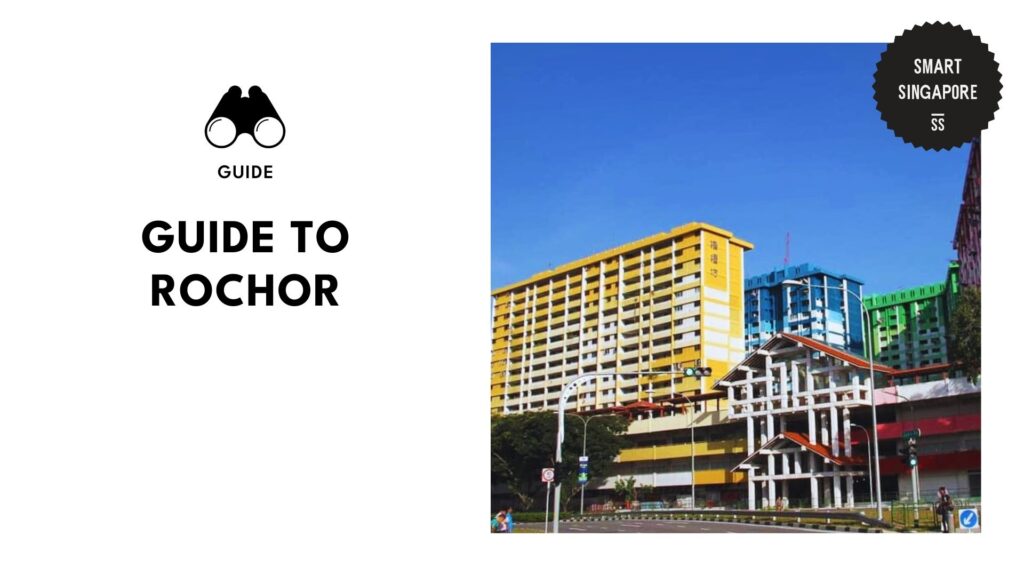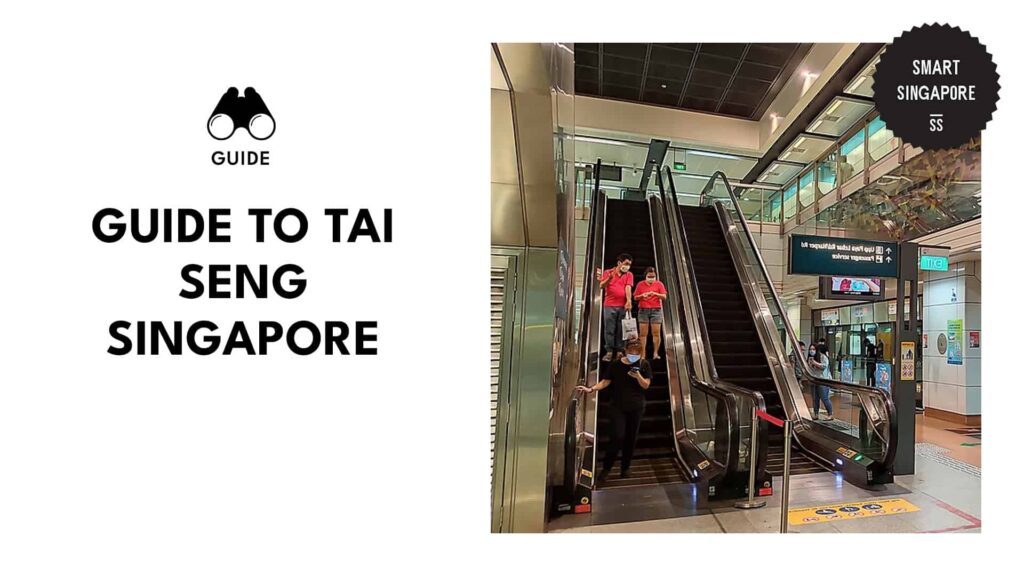Categories > Guides and Tips

The Travelers’ Guide to Weather and Climate in Singapore
- What type of climate does Singapore have?
- What is the average temperature in Singapore?
- What is the coolest month in Singapore?
- What are the seasons of the year in Singapore?
- Northeast Monsoon Season (December to early March)
- Southwest Monsoon Season (June to September)
- Inter-monsoon Periods (March to May and October to November)
- What is the geography of Singapore?
- Best Time to Visit Singapore
- Which month is best to visit Singapore?
- What clothes are best for Singapore weather?
- Is it OK to wear shorts in Singapore?
- Can you wear flip-flops in Singapore?
Traveling to Singapore? If you’re coming from a non-tropical country, you’re in for a different ride once you step inside the city-state’s seemingly perpetually warm climate.
We put together an extensive guide to prepare you for what’s ahead. Here are facts and tips about the weather and climate in Singapore!
What type of climate does Singapore have?
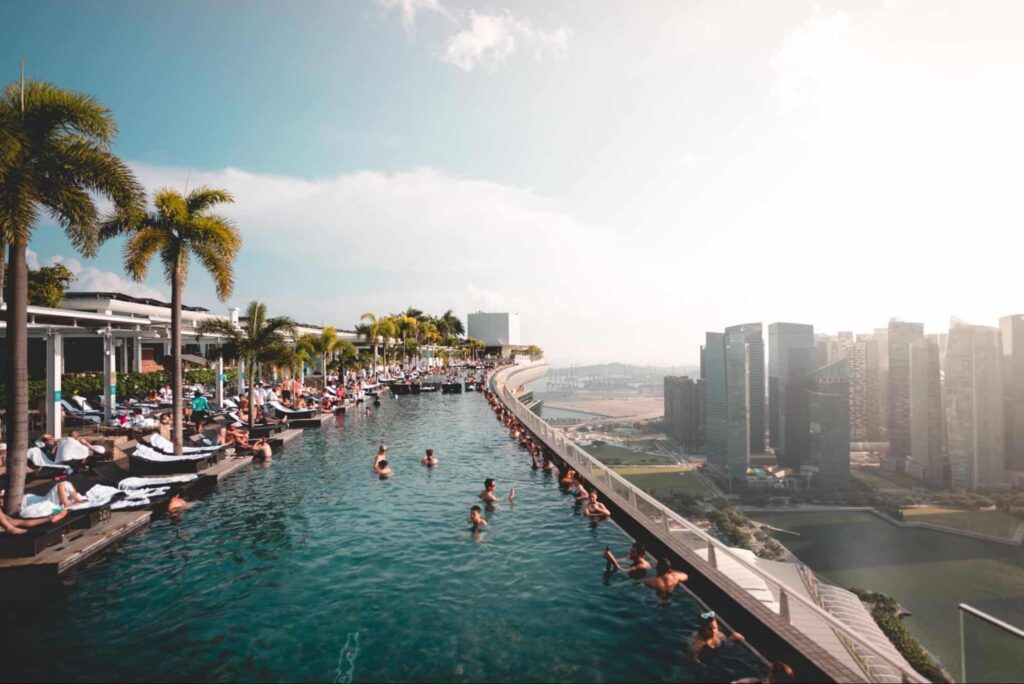
Singapore’s climate is tropical (hot and humid) due to its proximity to the earth’s equator.
Specific characteristics of the climate include high and uniform average temperature, high humidity, and plenty of rainfall.
Here’s a quick look at the country’s climate data, taken from the Meteorological Service Singapore.
| Average temperature | 25 °C to 31 °C |
| Relative humidity | 60% to 90% |
| Rainfall | 40% chance daily |
| Sunshine hours | Wet months: 4 to 5 hours Dry months: 8 to 9 hours |
What is the average temperature in Singapore?
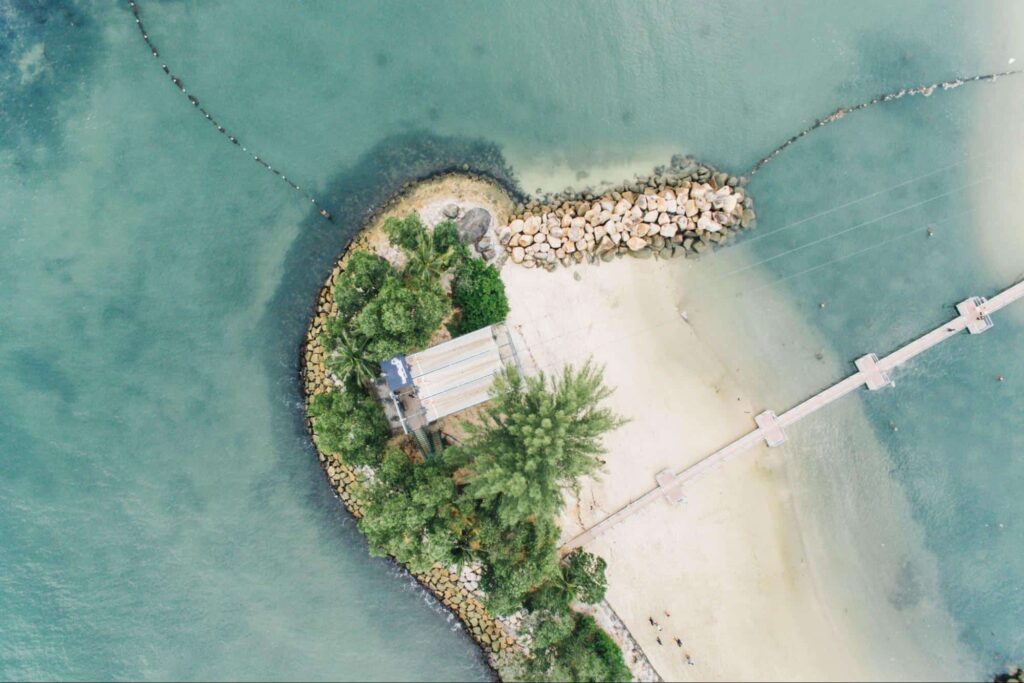
True to its tropical nature, average temperatures in Singapore range between 25 °C to 31 °C (77 °F to 87.8 °F).
Daytime is usually warmer at 31 °C to 33 °C while nighttime records 23 °C to 25 °C. The averages are near-uniform each month, with little variations.
Meanwhile, relative humidity in the city-state range between 60% and 90% depending on the time of day. The usual range is 70% to 80%.
Humidity levels tend to fall during the mid-afternoons and rainless days and rise during the mornings.
As for Singapore’s precipitation, the weather bureau says that rainfall occurs about 167 days of the year. A 40% chance that rain will fall also applies daily in the country.
What is the coolest month in Singapore?

The coolest months in Singapore usually fall in December and January when temperatures have a daily mean of 26 °C.
(The daily mean is the average of the highest and lowest temperatures recorded within a 24-hour period.)
On the other hand, the warmest months in the country usually occur in May and June, recording a daily mean of 27.8 °C.
An overview of the city-state’s climate data is available on the Meteorological Service Singapore website.
| How many types of weather are there in Singapore? The weather in Singapore can be categorized broadly as wet and dry. The former is characterized as months of frequent rainfall, while the latter is described as periods of windy days and minimal rainfall. The weather features throughout the year are influenced by the Northeast Monsoon, Southwest Monsoon, and inter-monsoon periods. |
What are the seasons of the year in Singapore?
Singapore has two distinct seasons—the Northeast Monsoon season and the Southwest Monsoon season.
These seasons are separated by inter-monsoon periods occurring twice a year.
Given that it’s a tropical country, Singapore does not have the usual four seasons (spring, summer, fall, and winter) experienced in the temperate regions.
Northeast Monsoon Season (December to early March)
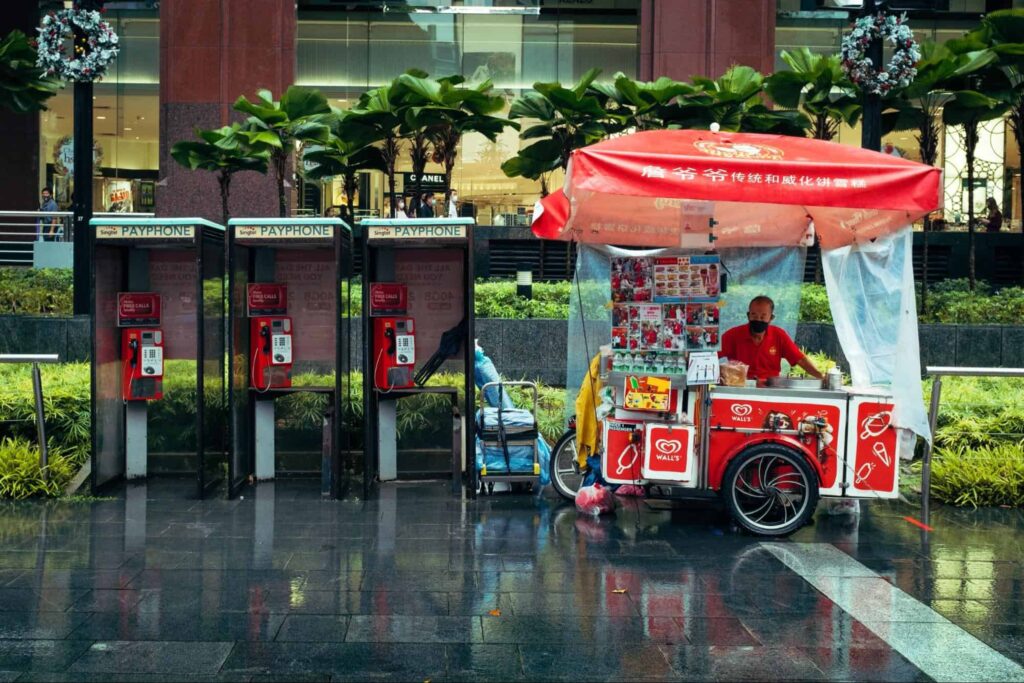
The Northeast Monsoon season has prevailing northerly and northeasterly winds that blow from December to early March.
Surges occur in the season’s early phase (December to January), causing moderate to heavy rain as well as showers in the afternoon and evening.
The latter phase of the season (January to early March) is usually windy and dry.
Southwest Monsoon Season (June to September)
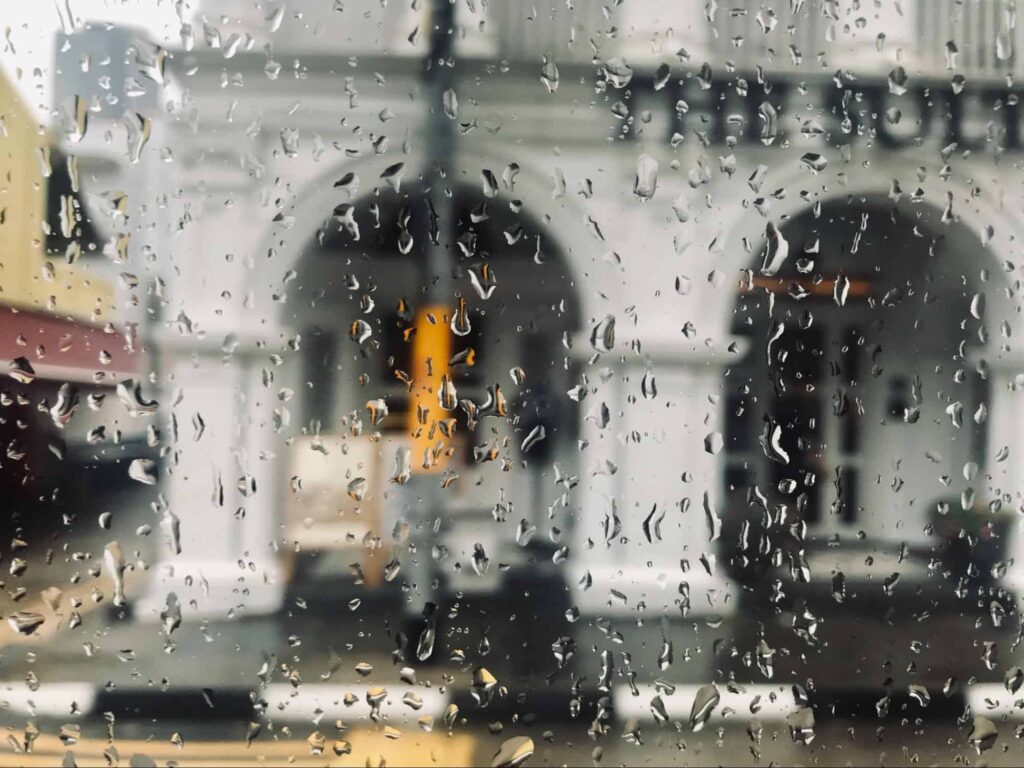
The blowing southeasterly and southerly winds bring with them “Sumatra Squalls,” causing heavy winds and heavy rainfall to occur in the island state from June to September.
Afternoon thunderstorms and showers usually occur during this season, too.
Inter-monsoon Periods (March to May and October to November)
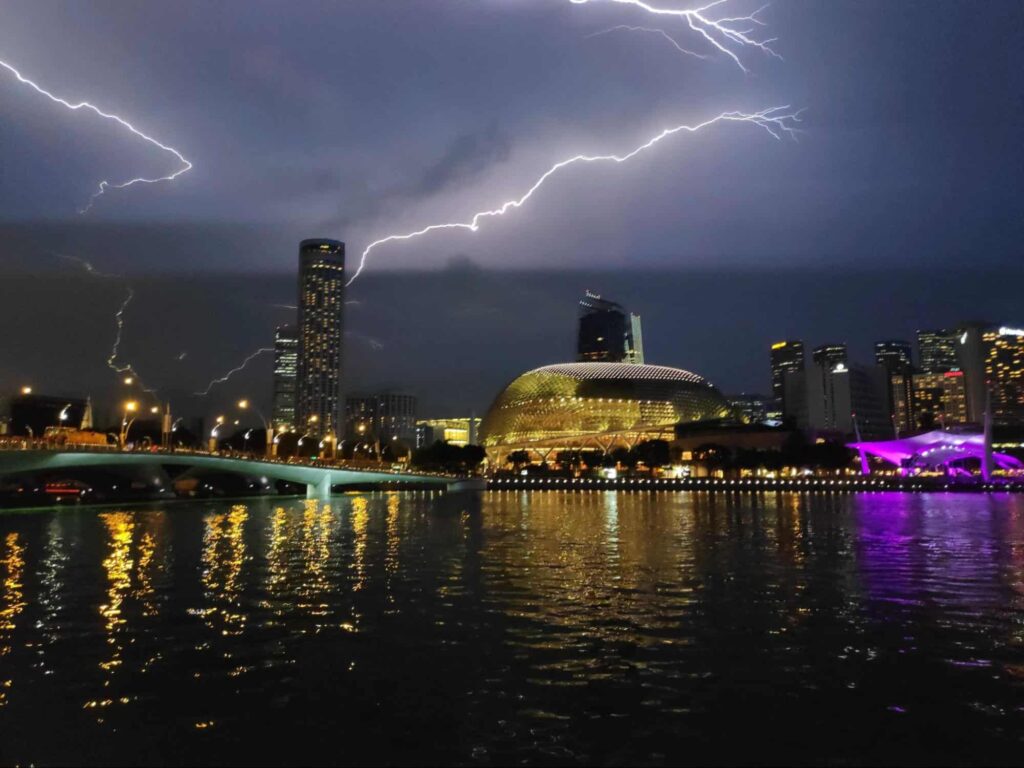
The inter-monsoon periods separate the two monsoon seasons. It occurs twice a year from late March to May and from October to November.
During the early inter-monsoon period, you can experience afternoons as either hot or stormy. This period also records the warmest months in Singapore (April or May).
Similarly, the later inter-monsoon period has stormy afternoons and evenings.
It’s wetter during this time of the year, which makes sense given how it’s close to the Northeast Monsoon Season’s wet phase.
| What is the rainiest month in Singapore? Singapore’s rainiest months fall from November to January. December is usually the wettest with about 19 rainy days occurring in the month. Meanwhile, the island nation is at its driest during the month of February. The weather bureau usually records a mere 9 days of rain during this period. |
What is the geography of Singapore?

Singapore is in Southeast Asia and located north of the equator. Its borders include the Johor Strait to its north, separating the island from its neighbor Malaysia.
In the south, the Singapore Strait serves as the border of the country north of Indonesia.
While many assume that Singapore is one tiny island, the nation also has several islets surrounding it.
Most of the land is a plateau enriched by water catchments and natural reserves. There are also occasional hills and peaks, mostly residing at its center.
Geographic regions of Singapore include the granite-rich central region, sedimentary rocks-laden west and southwest regions, and flat and sandy eastern region.
Best Time to Visit Singapore
After knowing about the weather and climate of Singapore, you might be wondering when is the best time to visit the country.
Well, it’s more than just considering average temperatures and rainfall!
Which month is best to visit Singapore?
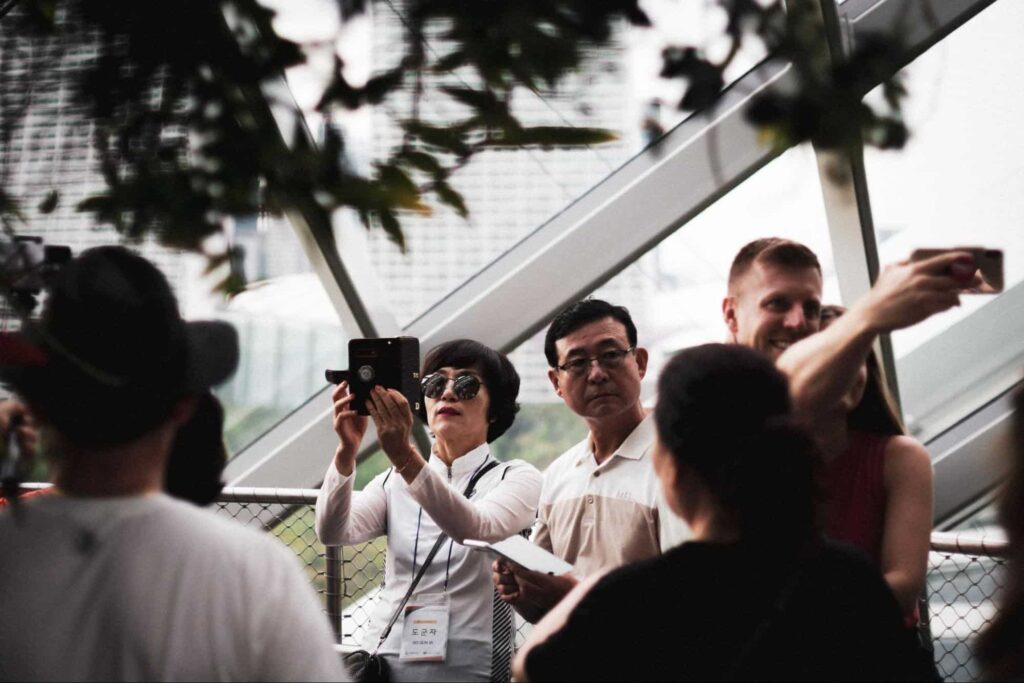
The best month to visit Singapore depends on when you’re most comfortable exploring and what you intend to do in the city. Here are a few bookable months to take note of.
- February. This is the driest month in Singapore, making it the perfect day for shopping and exploring the city. However, know that tourist attractions are usually crowded during this time.
Chinese New Year will also fall in February, which means many markets and shops will be closed for a week. Plan with the celebration dates in mind so you can make the most out of your trip.
- June to July. These months are perfect for shopaholics who want to take advantage of the sales season. Though, know that it’s the busiest period in the city.
- December to January. The temperature drops during these months, sparing travelers the sometimes unbearable heat and humidity in the tropics.
However, expect showers and rain to impede a few of your outdoor plans like evening walks and cycling sessions. The silver lining is that if the weather is good, you can do these things without worrying about a large crowd.
- August to November. You can expect a smaller crowd during these months, as this period leads to the late inter-monsoon period with its stormy weather.
Still, the attractions (especially indoor ones) will still make the visit worth it.
What clothes are best for Singapore weather?
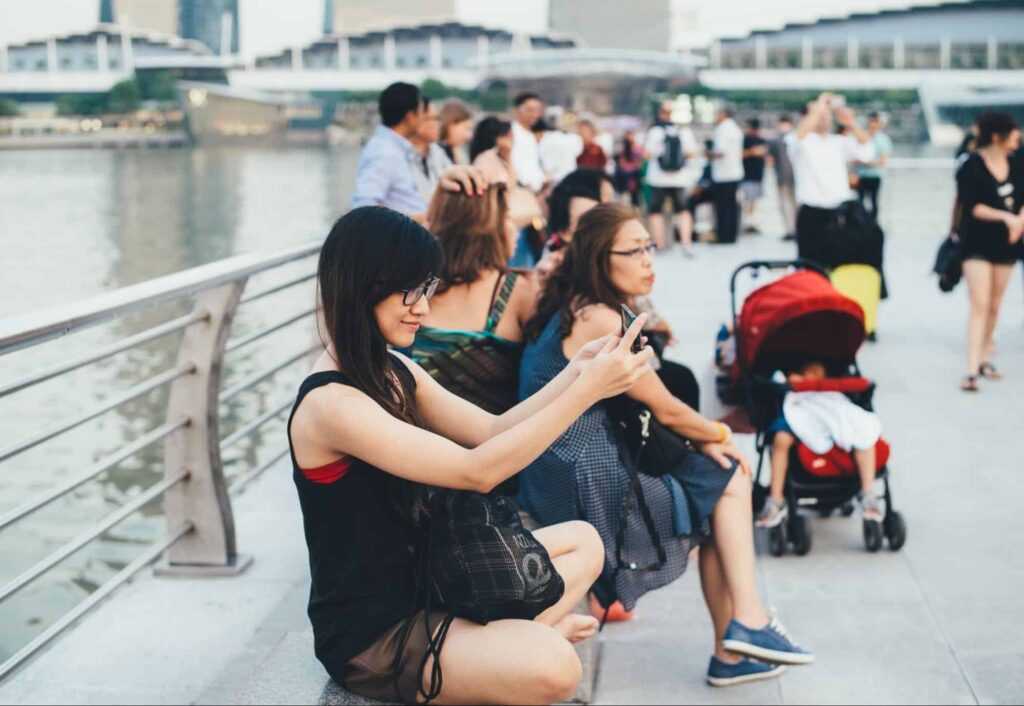
It’s best to wear comfortable and light clothing when exploring Singapore.
Also, wear fabric that works with the tropical climate such as cotton, polyester, silk, and linen.
Exploring Singapore also means a lot of walking, so ensure to wear a pair of comfortable shoes.
If you’re visiting religious sites, do wear appropriate and modest clothing.
Is it OK to wear shorts in Singapore?
It’s perfectly okay to wear shorts in Singapore.
That said, change to more appropriate clothes when visiting mosques, temples, and other religious sites as well as fine-dining restaurants.
Can you wear flip-flops in Singapore?
Wearing flip-flops in Singapore is the norm for most locals. That said, tourists can benefit from wearing them if they want to be comfortable during certain activities.
Flip-flops are perfect for beaches, pools, water parks, fishing sites, and markets.

